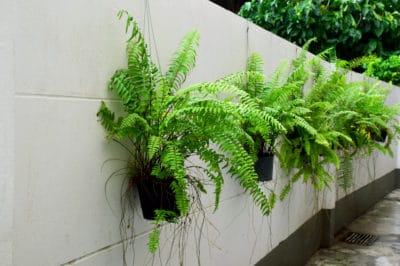About Boston Ferns
Nephrolepis exaltata, the Boston fern, is a perennial plant native to warm humid climates, where it grows in full to dappled shade. The plant can grow quite large if given the right conditions and care. One of its few negatives is that it does not flower, so – like ivy – the plant looks pretty much the same all year. However, it can be a good backdrop for something colorful.
Growing Outdoors
If you have the climate to grow Boston ferns outdoors all year, choose a spot with partial to full shade. Remember, this can become a large plant. Allow adequate room and consider placing at the back of the bed. Amend the soil with leaf mold or organic compost. Soil should drain well. Keep humidity high with misters or sprinklers if you live in a dry area.
Outdoor Locations
Whether as a permanent planting or a summer migrant, it’s important to locate your Boston fern in the right place. This is a plant that can do well in a northern exposure or under deciduous trees, since it prefers shade. A south-facing exposure is not a good choice unless the plant is tucked behind a wall in an entrance-way. Protect the plant from drying winds.
Outdoor Problems
Assuming you have the right climate for growing Boston ferns outside, you should still be alert for problems:
- Lack of humidity will cause browning and leaf drop.
- Fertilize lightly to provide proper nutrition.
- Most insect issues are minor, but slugs can be very damaging to Boston ferns – hand pick as necessary.
The Summer Move
Even in colder climates, you may want to move your Boston fern outdoors for the summer. Prepare the plant for the move by exposing it to outside temperatures for a few hours a day, gradually increasing the time over a week or two. Find a shady area and pay close attention to humidity. In dry climates you’ll have to water more frequently and may need to mist plants as well.
The Fall Move
If you’ve had your plant outside all summer, your primary concerns will be humidity and insects when you move it back. Central heating usually means dry air, so pay extra attention to misting and humidity when you move the plant inside. Inspect for insects such as scale or mealy bugs and use insecticidal soap. Expect leaf drop for a few weeks after the move; this is normal.
